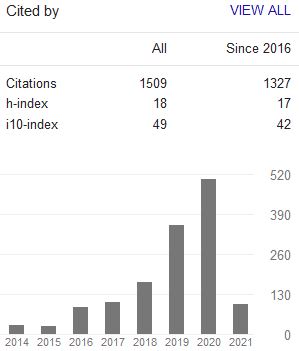THE MANAGEMENT OF MUSLIM SPIRITUAL TOURISM IN LOMBOK, INDONESIA: Opportunities and Challenges
Abstract
Keywords
Full Text:
PDFReferences
Alecu, I.C. “Epistemological Aspects of Religious Tourism in Rural Areas.” International Journal of Business, Management and Social Sciences, Vol. 2, No. 3, 2010.
Ambary, Hasan Muarif. Menemukan Peradaban: JejakArkeologis dan Historis Islam Indonesia. Jakarta: Pusat Penelitian Arkeologi Nasional, 1998.
Furqan, Alhilal and Ahmad Puad Mat Som. “Effects of Decentralization Policy on Island Destination in Indonesia.” World Applied Sciences Journal. 10 – Special Issue of Tourism and Hospitality, 2010.
Garrod, Brian. Tourism Marketing: A Collaborative Approach. N.p.: Channel View Publications, 2005.
Hausler, Nicole. “Community based Tourism (CBT) What Works and What Does not Work? Drawing on Experiences in South America and Asia.” www.mascountour.info
Norman, Alex and Carole M. Cusack (eds). Religion, Pilgrimage, and Tourism. Abingdon. Oxon, New York: Routledge, 2015.
Norman, Alex. Spiritual Tourism: Travel and Religious Practice in Western Society. London: Continuum, 2011.
Rais, Hanum Salsabila. 99 Cahaya di Langit Eropa. Jakarta: Gramedia, 2011.
Shackley, Myra. Managing Sacred Sites: Service Provision and Visitor Experience. London, New York: Continuum, 2001.
Sjadzili, Ah. Fawaid. “Mengunjungi Tempat Suci; Ragam Motivasi Wisata Religious.” Jurnal Karsa, Vol XVIII No. 2 (October 2010).
Soemardjan, Selo. Perkembangan Kebudayaan Nasional dan Daerah di Indonesia. Yogyakarta, 1977.
Subawa, Nyoman Sri Subawa and Ni Wayan Widhiasthini. “Wujud Revitalisasi Wisata Spiritual Sebagai Ekspansi Kapitalisme Pariwisata.” Jurnal Sosiohumaniora, Vol. 15 No. 1 (March 2013).
Timothy, Dallen J. and Daniel H. Olsen (eds). Tourism, Religion and Spiritual Journeys. New York: Routledge, 2006.
World Tourism Organization. Religious tourism in Asia and the Pacific. Madrid, Spain: World Tourism Organization, 2011.
Zahwu, Abu. Alhadis wal Muhaddisun. Beirut: Dar el Fikr, 1989.
DOI: 10.15642/JIIS.2016.10.2.213-236
Refbacks
- There are currently no refbacks.
Indexed by:
Journal of Indonesian Islam (ISSN 1978-6301 and E-ISSN 2355-6994) is published by the Postgraduate Program (PPs) and the Institute for the Study of Religion and Society (LSAS), State Islamic University (UIN) of Sunan Ampel Surabaya.
Journal of Indonesian Islam by http://jiis.uinsby.ac.id/index.php/JIIs/index is licensed under a Creative Commons Attribution-ShareAlike 4.0 International License.
Copyright ©2020 State Islamic University (UIN) of Sunan Ampel Surabaya. Powered by Public Knowledge Project OJS.







